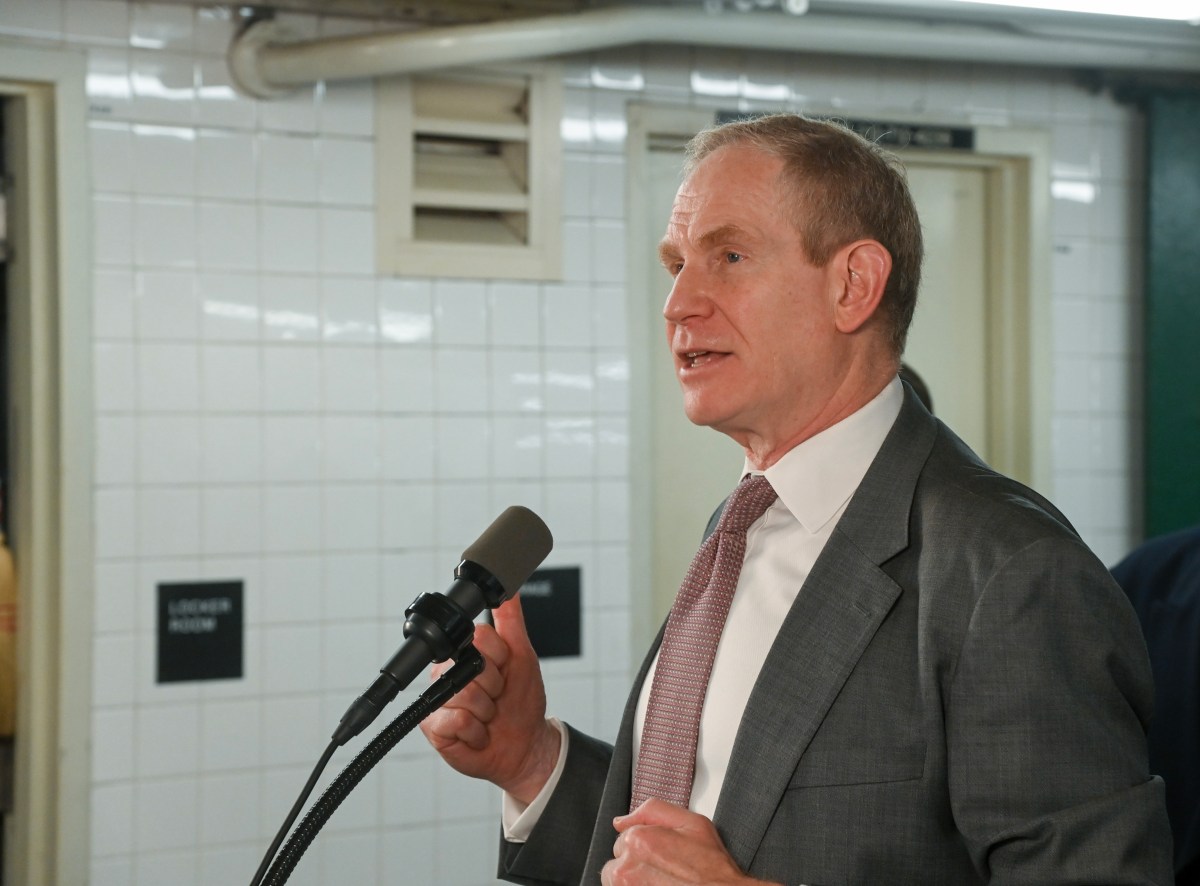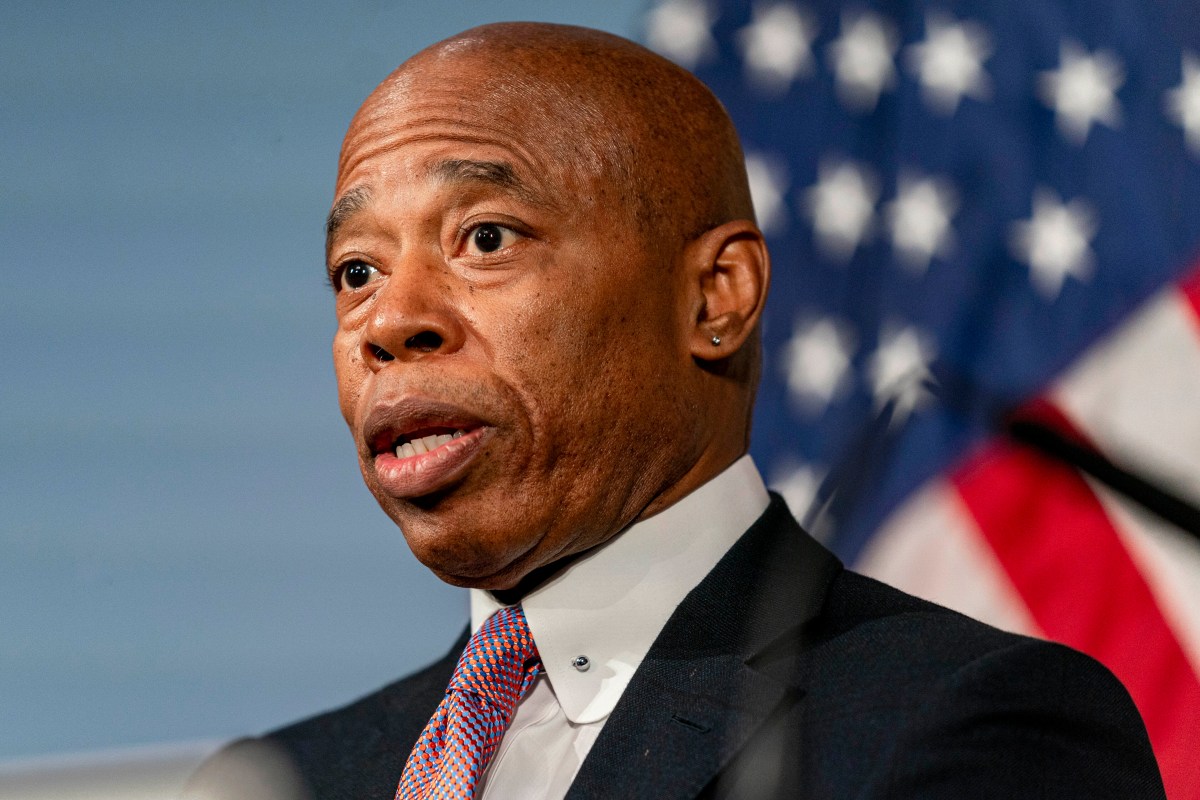To the editor,
In your story about residential parking permits (“Pay-to-park plan cheered,” Feb. 9), District Leader Jo Anne Simon said that such a system “is about residents having the ability to park in their own neighborhoods without … having non-residents use their neighborhoods as a commuter parking lot.”
But Simon fails to see that one neighborhood receiving residential parking permits will turn neighboring communities into the same potential “commuter parking lot” that she refers to.
The domino effect is obvious: if the city starts with permits in Brooklyn Heights and Downtown Brooklyn, there will be a push back into Fort Greene and Clinton Hill and Park Slope. Then, those neighborhoods will demand permits, which will push the parking problem into Windsor Terrace, Kensington and Greenwood Heights.
The residential parking permit plan needs to look at the borough as a whole rather than focusing on just a few neighborhoods. Whether you are a car owner or a commuter, you will be affected by the mayor’s congestion pricing plan.
The Brooklyn I love should be about equality and community. Residential parking permits are just another divider, not a uniter.
Aaron Brashear, Greenwood Heights
• • •
To the editor,
As a resident of Downtown Brooklyn, where illegal parking by special-permit users is rampant, I commend the Department of Transportation for finally considering residential parking permits.
But before such a system is designed, the city, state and federal government must radically reduce the number of government-issued parking placards.
Unless such a reduction takes place, no residential parking permit system will be effective. Ursula Hahn, Concord Village
• • •
To the editor,
I think residential parking permits are a great idea, but it should also apply to Fort Greene. I see many people parking on my block (Vanderbilt Avenue, between Gates and Greene) and then heading to the C train to finish their commutes to Manhattan.
This is frustrating for residents who work at night and can’t get a parking spot in the morning.
Luis Fernandez, Fort Greene
• • •
To the editor,
The assumed mindset is that the only commuters are those heading to Manhattan. I am a driving commuter living in Staten Island who uses the Verrazano Bridge to reach my Court Street workplace.
The alternatives would be a city bus to the ferry to the subway, or a commuter bus to Manhattan, then the subway to Brooklyn. Instead, I park my car on Hicks Street below Kane Street after 10 am (when street cleaning is done) and walk to my office.
Some would be content with parking restrictions during business hours on weekdays in order to prevent commuter parking. But I have maintained my business office in the Heights since 1987, and lived in the Heights until 2000. I patronize many businesses in the Heights, Cobble Hill, Boerum Hill, Carroll Gardens, and Park Slope.
How should “commuters” like me be treated under permit parking?
Thomas Lawrence, Staten Island
Green Church update
To the editor,
It is a sad day for Bay Ridge when a church congregation has decided to demolish its own building (“More ‘Green’ to be torn down,” Feb. 9). The community cannot understand why the congregation at Bay Ridge United Methodist Church is not willing to seek a buyer who would save this historic landmark and allow 211 former members and pastors buried on the grounds to rest in peace.
The pastor and congregation are asking the community to help demolish the building by offering the green stones of this beautiful Church as mementos. I wonder what God would say, if he were here? The congregation should be ashamed of itself.
I suggest that Bay Ridge residents seeking spiritual guidance should visit the Christ Church on Ridge Boulevard and the Bethlehem Lutheran Church on Fourth and Ovington avenues. The pastors there are leaders in our community.
Jeanette Correa, Bay Ridge
Stop feeding Ratner
To the editor,
The $700 million in subsidies for Atlantic Yards cited by Councilmembers Yassky and James is an understatement of the subsidies Ratner is being given by the city and state (“James, Yassky: Ax Yards funds,” Feb. 9).
Among other things, Ratner is basically being given the $637.2 million arena for free through an “R-TIFC-PILOT” agreement (pronounced “Artifice PILOT,” or “Return Total Intercepted For Costs PILOT”).
Then there are 139 years of real-estate tax exemptions.
Then there are several-hundred-million more from the state and city in flat-out direct subsidies.
Then there is the Metropolitan Transportation Authority discount on the land that Ratner is being sold at below market.
Then there is the additional subsidy from the tax-exempt bonds on the arena, which includes exemption from state and city taxes in addition to federal.
And Ratner wants more tax-exempt bonds and housing subsidies for the residential portion of his project.
So even before you get to the subsidy he gains because of the state’s use of eminent domain to make properties available to him, the figure is way over $700 million. It clearly exceeds $1 billion and is quite possibly close to $2 billion.
Michael White, Brooklyn Heights
No to pay raises
To the editor,
How dare state legislators support a pay raise (“On the record,” Feb. 9). The New York State legislature is non-functional. It is run by two party bosses.
Both Sheldon Silver and Joe Bruno — and the governor of the moment — are the deciding voices on just about anything that happens in the state. Since they are of opposing parties, not much happens.
Stasis should not be rewarded. A raise for all of this body of do-nothings is totally unwarranted. These collectors of sinecures should be dismissed, not paid more.
Barbara Charton, Brooklyn Heights
Leaflet disgust
To the editor,
Gov. Spitzer’s recent signing of legislation banning the distribution of fliers is disappointing to citizens who cherish free speech (“Circular logic: Anti-flier bill gets Spitzer’s pen,” Feb. 2).
Consider the great obstacles faced by challengers for public office. Incumbents have taxpayer-financed mailings that waste tens of millions of dollars each year. By coincidence, they increase in volume prior to election time. They might be cleverly disguised as public service announcements, but in reality they are an extension of their re-election campaign. Underdog candidates have little money, but count on volunteers to do door to door literature drops.
And neighborhood Mom and Pop stores can’t afford the expensive mailings that incumbents send around holiday time, too. Small businesses provide jobs to students and seniors who deliver their fliers door to door.
This misguided bill should be amended to allow voters the ability to be dropped from elected officials mass mailing lists. This would reduce litter in our mailboxes and save public funds for better uses.
Larry Penner, Great Neck, NY






















